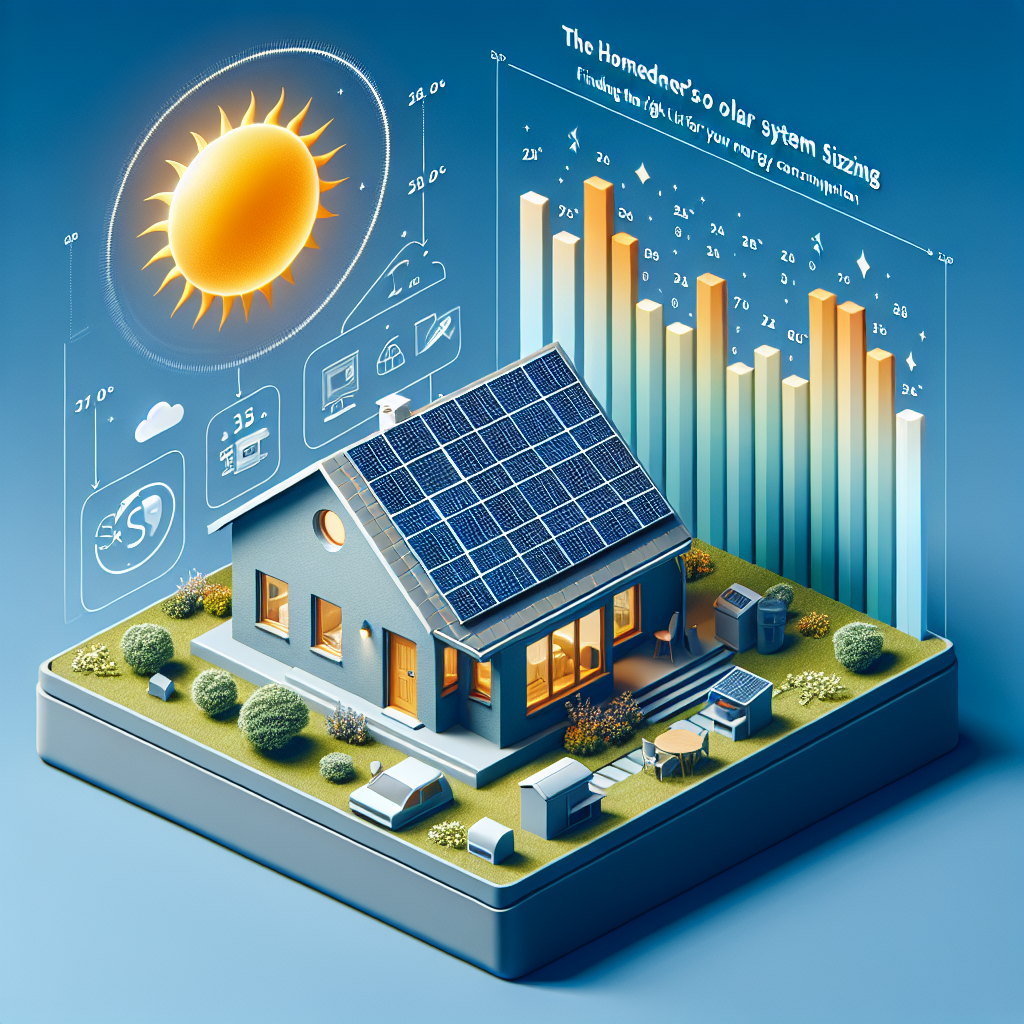As the world moves towards sustainable energy solutions, many homeowners are considering solar power as a viable option to reduce their carbon footprint and save on energy costs. However, one of the most crucial steps in adopting solar energy is sizing your solar power system correctly. In this guide, we’ll break down everything you need to know about solar system sizing, ensuring that you find the perfect fit for your energy consumption.
Understanding Solar System Sizing
When we talk about solar system sizing, we refer to determining how many solar panels and inverters you need to meet your energy needs efficiently. An appropriately sized solar system ensures that you generate enough energy to power your home while minimizing excess energy production or shortfalls.
Why Size Matters
Sizing your solar system is not merely a matter of stacking as many panels as possible on your roof. An oversized system may lead to unnecessary expenses, while an undersized system might not provide enough energy to meet your needs. Proper sizing ensures you invest wisely and enjoy maximum benefits from your solar energy system.
Analyzing Your Energy Consumption
Gather Your Electricity Bills
The first step in sizing your solar system is to analyze your energy consumption. Collect your utility bills from the past year; this will give you a comprehensive overview of your monthly electricity usage. Look for your average kilowatt-hours (kWh) consumed monthly and annually.
Understand Seasonal Variations
Energy consumption can vary seasonally due to factors like heating in the winter and air conditioning in the summer. Make note of which months your energy usage peaks and which months it dips. This data will help you factor in seasonal changes when sizing your solar system.
Assessing Solar Potential
Evaluating Roof Space
Once you have a clear picture of your energy consumption, it’s time to assess your roof’s solar potential. You’ll need to check the following factors:
- Orientation: Solar panels perform best when facing south. East and west-facing installations are also viable but slightly less efficient.
- Tilt Angle: The angle of your roof can affect how much sunlight your panels receive. Ideally, a tilt angle close to your latitude will yield the best results.
- Shade: Inspect for potential shading from trees, buildings, or solar panels. Even partial shading can significantly reduce the performance of solar panels.
Consider Your Location
Your geographic location plays a critical role in determining the solar energy potential of your home. Research local solar insolation (sunlight exposure) figures, which can guide you on how much solar energy you can expect to generate throughout the year.
Sizing Your Solar System: The Formula
Now that you have your energy consumption data and solar potential information, you can apply a simple formula to determine the appropriate size for your solar system.
The Basic Calculation
- Calculate your monthly energy usage in kWh.
- Find your region’s average solar hours per day (typically ranges from 4-7 hours).
- Divide your monthly energy use by the number of peak sunlight hours in a month (average about 30 days).
For example, if your average monthly energy use is 900 kWh, and you live in an area with 5 peak sunlight hours per day:
- Monthly peak sunlight hours = 5 hours/day * 30 days = 150 hours
- Required system size = 900 kWh / 150 hours ≈ 6 kW
Panel Efficiency
Keep in mind that not all solar panels are created equal. Panel efficiency varies, so if you choose a panel with a higher efficiency rating, you may require fewer panels to meet your energy needs.
Choosing the Right Equipment
Solar Panels
Once you have a general idea of the system size you need, it’s time to choose your solar panels. Look for a manufacturer with a good warranty and performance track record. It’s worth investing a little extra in high-quality equipment that will last longer and work more efficiently.
Inverters
Inverters convert the direct current (DC) generated by your solar panels into alternating current (AC), which powers your home. There are different types of inverters, including string, microinverters, and power optimizers. The choice of inverter will be influenced by the size and configuration of your solar system.
Battery Storage
Consider whether you want to incorporate battery storage into your system. Batteries can store excess energy produced during the day for use at night or during cloudy days, enhancing your energy independence and reliability.
Getting Professional Help
While DIY sizing can provide a foundational understanding of your solar needs, it’s wise to consult with a professional solar installer. They can better assess your specific situation, help you with permitting and local regulations, and ensure your installation is optimized for efficiency.
Conclusion: Make the Switch to Solar with Confidence
Sizing your solar system might seem daunting at first, but with careful analysis and the right information, you can make an educated decision. Not only will a well-sized solar system reduce your energy bills, but it can also increase your home’s value and contribute to a sustainable future.
By taking the time to understand your energy consumption and working with professionals, you’ll be well on your way to harnessing the power of the sun and enjoying all the benefits that come with solar energy. Make the switch to solar with confidence—you’ll be setting the stage for a greener tomorrow.


